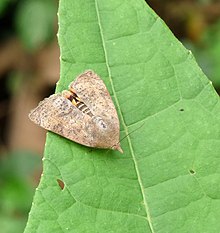| Simaethistoidea | |
|---|
| Tineoidea | - Acrolophidae (burrowing webworm moths)
- Arrhenophanidae
- Eriocottidae (Old World spiny-winged moths)
- Psychidae (bagworm moths)
- Tineidae (fungus moths)
|
|---|
| Gracillarioidea | |
|---|
| Yponomeutoidea | |
|---|
| Gelechioidea | |
|---|
| Galacticoidea | |
|---|
| Zygaenoidea | |
|---|
| Cossoidea | - Cossidae (carpenter millers, or goat moths)
- Dudgeoneidae (dudgeon carpenter moths)
|
|---|
| Sesioidea | - Brachodidae (little bear moths)
- Castniidae (castniid moths: giant butterfly-moths, sun moths)
- Sesiidae (clearwing moths)
|
|---|
| Choreutoidea | - Choreutidae (metalmark moths)
|
|---|
| Tortricoidea | - Tortricidae (tortrix moths)
|
|---|
| Urodoidea | - Urodidae (false burnet moths)
|
|---|
| Schreckensteinioidea | - Schreckensteiniidae (bristle-legged moths)
|
|---|
| Epermenioidea | - Epermeniidae (fringe-tufted moths)
|
|---|
| Alucitoidea | - Alucitidae (many-plumed moths)
- Tineodidae (false plume moths)
|
|---|
| Pterophoroidea | - Pterophoridae (plume moths)
|
|---|
| Whalleyanoidea | |
|---|
| Immoidea | |
|---|
| Copromorphoidea | - Copromorphidae (tropical fruitworm moths)
- Carposinidae (fruitworm moths)
|
|---|
| Thyridoidea | - Thyrididae (picture-winged leaf moths)
|
|---|
| Calliduloidea | - Callidulidae (Old World butterfly-moths)
|
|---|
Papilionoidea
(butterflies) | - Papilionidae (swallowtail butterflies)
- Hedylidae (American moth-butterflies)
- Hesperiidae (skippers)
- Pieridae (whites, yellows, orangetips, sulphurs)
- Riodinidae (metalmarks)
- Lycaenidae (gossamer-winged butterflies: blues, coppers and relatives)
- Nymphalidae (brush-footed, or four-footed butterflies)
|
|---|
| Hyblaeoidea | |
|---|
| Pyraloidea | - Pyralidae (snout moths)
- Crambidae (grass moth)
|
|---|
| Mimallonoidea | - Mimallonidae (sack bearer moths)
|
|---|
| Lasiocampoidea | - Lasiocampidae (eggars, snout moths, or lappet moths)
|
|---|
| Bombycoidea | - Anthelidae (Australian lappet moth)
- Apatelodidae (American silkworm moths)
- Bombycidae (silk moths)
- Brahmaeidae (Brahmin moths)
- Carthaeidae (Dryandra moth)
- Endromidae (Kentish glory and relatives)
- Eupterotidae
- Phiditiidae
- Saturniidae (saturniids)
- Sphingidae (hawk moths, sphinx moths and hornworms)
|
|---|
| Noctuoidea | - Erebidae (underwing, tiger, tussock, litter, snout, owlet moths)
- Euteliidae
- Noctuidae (daggers, sallows, owlet moths, quakers, cutworms, darts)
- Nolidae (tuft moths)
- Notodontidae (prominents, kittens)
- Oenosandridae
|
|---|
| Drepanoidea | - Drepanidae (hook-tips)
- Cimeliidae (gold moths)
- Doidae
|
|---|
| Geometroidea | |
|---|
| Superfamily unassigned | |
|---|













